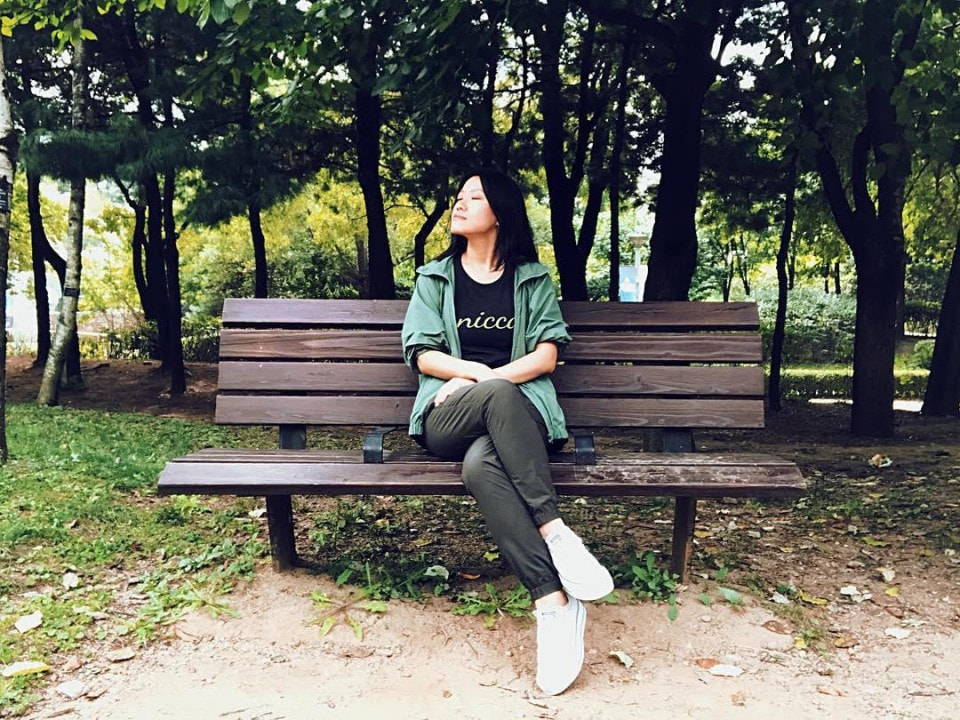|
First published via LinkedIn Pulse. Read Linkedin Article. Growing up in a relatively conservative culture, whereby almost every decision I made or every action I took had to be approved or answerable to an authoritative figure or a social ideology, I remember how much I used to crave freedom. I loathed unnecessary criticisms, baseless judgments, and unfair expectations. My own personal time and space became sacred, and I indulged myself in an inner world of fantasy every chance I got. My biggest dream was to be able to run away some day, to a beautiful place - perhaps a place I could call my own home - that would grant me full independence and the liberty to self-govern. I felt immense power just fantasizing about a completely unrestrained self, basking in this self-defined identity of being free. I held on to this reverie throughout my teens, twenties and early thirties, and unknowingly allowed it to guide the course of my life - my work, my relationships, and my worldview. Of course, the world around me continued to function in an entirely different way, and I often wondered if the bubble I had wrapped around myself served to protect me, or sink me deeper into the illusion that I could be free. The more I struggled with being controlled or limited, the more tightly I held on to my perceived need for freedom. And then meditation happened. Important discoveries often come to us in the most unknowing ways, when we least expect it, and when we do not anticipate. Upon parting with an almost decade-long corporate portfolio, I signed myself up for a ten-day Vipassana meditation retreat, and went through one of the most excruciatingly painful experiences I had encountered in the first three decades of my life. We were invited to sit for one hour without changing our posture, to practice strong determination in the process of observing ourselves. While the intention of the practice was definitely not one of self-torture, the over-achiever in me couldn't help but take up the "challenge" in its entirety, and for the full one hour I never moved an inch. As the drilling pain grew exponentially in my legs and shot through the full length of the spine, I instinctively threw myself back into my bubble of freedom, hoping that my power of imagination would take me far, far away from the reality of the pain. But my bubble didn't offer the relief it usually would. If anything, the pain only magnified. I was desperate to be free of this pain. I silently screamed over and over again in my head, My legs! My legs! Stop this pain NOW! as tears rolled uncontrollably down my cheeks. Even though I was certain I appeared absolutely unmoving and composed on the outside, the internal battle was raging. My bubble started to press in on me, challenging each and every byte of reliance on escape I had stored in my consciousness over the years. The meditation practice was all about self-observation, and the essence of observation is to pay attention without being caught up in whatever we are observing in the moment. When we observe, there is no need to do anything. We learn to take a step back and simply watch, with curiosity and patience. Moment by moment, as I learned to observe my own body and mind, my muscles loosened and relaxed, my bubble started fading away, and the angry, relentless chatter in my head gradually subsided. The painful sensation was still there at my legs, but strangely it was no longer bothering me so much. For the rest of the hour, I sat with an ease I had never experienced before, even though I was in full confrontation with the reality of my experience. Was I free? It certainly felt so. In the middle of deep turbulence, there was no room for escape, and yet freedom found me. It took me over thirty years and a somewhat intensive meditation experience to bring to light what freedom - a core value I had aligned my life with - truly means. Escape does not really bring freedom, much like how chocolate doesn't bring lasting comfort, or how working out at the gym doesn't increase our self-worth. And yet escape seems to be the only means to freedom that the modern world is currently encouraging. My struggle for freedom amidst pain was at best a form of distraction, and at worst, a multifold intensification of the pain. When we don't like the pain we feel inside, we tend to seek out something outside of us for some relief, not realizing that the unpleasantness really comes from within. But when I chose to direct my attention inwards to gently observe my pain, I was able to find freedom in the pain right there and then. Since then, I have been consciously reminding myself of this insight with almost every physically, mentally and emotionally painful experience that comes my way. From hectic schedules, professional blunders, ruminative thoughts and moments of self-doubt, to difficult relationships and the stress of being a caregiver, I practice turning my attention inwards, remaining mindfully aware of the pain that comes, learning not to invite it for a stay, and then watching it eventually change and fade away. With each painful experience that arrives, the practice begins. And with each moment of practice, comes a moment of freedom. Today, freedom remains my top core value, guiding me in every decision I make. But I no longer regard freedom in the same way as before. Rather than running away, I intentionally choose to turn towards. Rather than wishing for things to be different, I learn to be at ease with what is. In the absence of futile struggle, there is freedom to be found in every moment of difficulty, and even in every step and breath I take. Without a doubt, this takes a lot of practice, but I am inclined to make this practice a lifelong one. Connect with Erin, because she would love to practice mindfulness with you. Do give a like, leave a comment, or share this article if Erin's words resonate with you!
1 Comment
Suffering is a part of life. Or is it?
There is a common saying that "pain is inevitable, but suffering is optional". We are constantly faced with challenges and struggles that may bring us pain, but this does not mean that we have to keep suffering from the pain. Suffering can range from traumatic experiences, extreme or chronic stress, to depressive moods, anxiety and other unpleasant emotions. As long as there is unrest, unease, dissatisfaction or turbulence within ourselves, we can be fairly certain that suffering exists. And we usually have no issues identifying the existence of suffering. In mindfulness practice, we are working towards minimizing this suffering by gaining a deeper understanding of why suffering exists. Suffering happens when we are unsatisfied with our circumstances and feel compelled to change them, despite things being out of our control. When we meet with an unpleasant situation we don't like, we develop an aversion or rejection towards the experience. Thoughts develop: No, it shouldn't be this way, this can't be happening to me; emotions like anger, resentment, disappointment, shame, and guilt arise. We begin to cling on to our thoughts and feelings; we ruminate and obsess, replaying and looping little scenes in our head. Likewise, when we encounter a pleasant situation, we are likely to develop an attachment towards what we like. We want it to happen to us all the time, and then we become afraid that it won't, or feel disappointed when it doesn't. We are afraid to let go, and when things do not happen according to our wishes, we refuse to accept reality. The concept of the second arrow is important for us to further understand our suffering. We are often involuntarily struck by a first arrow, causing some pain to us. But on top of feeling this pain from the first arrow, we have the tendency to automatically shoot a second arrow at ourselves, at that exact same spot, thus causing a much bigger and often unnecessary pain. We cannot stop the first arrow from being shot at us, but the second arrow is optional. That second arrow is suffering. Take for example, a loved one has forgotten to wish you on your birthday because they have recently been exceptionally busy. Naturally you feel disappointed, but because your habitual mind starts shooting the second arrow, you begin to think: I always remember his/her birthday, why doesn't h/she remember mine? S/he is losing interest; s/he doesn't love me anymore. Or perhaps your supervisor criticises the recent proposal you had drafted. Immediately, you feel an unpleasant sensation somewhere in your body, and a thought arises in your mind: My report is not good enough. And then you react to that thought with a follow-up of a string of thoughts: That must mean I'm not good enough. Can I really handle this job? I'm such a failure. Why can't I do anything right? Feelings of embarrassment, fear and anxiety may tag along with those thoughts, and the next thing you know, you are suffering. Mindfulness trains our mind to recognize both the first arrow and the second arrow we shoot at ourselves. This recognition allows us to create space around our thoughts and feelings; instead of reacting to them with the second arrow, we can choose to respond in a different way. With mindfulness practice, we learn that our thoughts and feelings are not us, and we do not need to identify with them. We learn to notice when we are telling ourselves stories and falling for those narratives. We learn to watch our thoughts and emptions come and go in the mind, and we cultivate a gentle, non-judgmental awareness towards the habitual nature of our mind. We learn to stop resisting and start accepting things the way they are. We learn to be okay with whatever that arises in our experience. But this does not mean that we give up hope, live indifferently or withdraw from improving our life. In fact, the awareness of our suffering and waking up to it, is by itself an improvement to our life. Instead of reacting impulsively, we are interrupting our negative habitual patterns to respond in a better way. Instead of feeling constantly uneasy, unsatisfied, unhappy with life, we are cultivating more calmness and making peace with ourselves. Learn how to wake up to suffering with the 8-week Mindfulness-Based Stress Reduction (MBSR) Program we offer. |
About The AuthorMiMo founder Erin Lee is a Mindfulness Coach and MBSR Teacher at Mindful Moments, and advocate of mindfulness as the way of life. She conducts the classic 8-Week MBSR Program, as well as the 8-Week MBSR Workplace Program. Categories
All
ContributeAre you a mindfulness practitioner and have meaningful experiences or thoughts about mindfulness that you'd like to share? You can contribute an article on the MiMo blog! Please contact Erin to find out more.
Archives
June 2021
|






 RSS Feed
RSS Feed